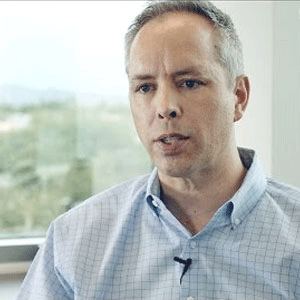THANK YOU FOR SUBSCRIBING

Intelligent Manufacturing - manufacturing a better future
Richard Koh, Chief Technology Officer, Microsoft [NASDAQ: MSFT]


Richard Koh, Chief Technology Officer, Microsoft [NASDAQ: MSFT]
Prior Years
Till this day, I still remember my first job as an IT specialist maintaining manufacturing and supply-chain systems, and being amazed how the systems were like a maestro orchestrating the markets’ forecasts, materials requirements planning, factory build plans, parts purchasing plans, inventory pick orders, line assembly work orders and shipping manifests, etc. In many ways, the building of physical products has remained unchanged for decades. However, the underlying digital fabric and internet connectivity, and consequently, manufacturing and supply-chain systems have been undergoing a massive transformation.
Fast Forward
Today, the hyper-connected digital world has not only led to many breakthroughs in how many systems can collaborate in real-time securely across many organizations, but ambient intelligence powered by the rapid advancements in Artificial Intelligence (AI) has also empowered software applications to be infused with AI. All these are made possible by Microsoft’s worldview of the Intelligent Cloud and the Intelligent Edge.
Let me break the above view into two themes – connecting Data, Internet of Things (IoT) and AI, and Security.
Connecting Data and Artificial Intelligence
Data is generated at the edge in many manufacturing scenarios, whether it is the level of inventory of raw materials, to the machine health of assembly robots and shipments of goods in a container crossing the oceans, the ever-changing nature of data in real-time at the edge is a reality since the industrial age.
But the disconnected and sometimes “analog” nature of each of the discreet processes along with the manufacturing and supply-chain, challenges many organizations to detect and respond to the dynamic changes in market demands of their products, adverse weather patterns that can potentially disrupt the supply-chain, real-time wear-and-tear information of their machines, and many more. The real world constantly presents changes that are unexpected and without a robust digital feedback loop, the lack of transparency and traceability, the entire manufacturing and supply-chain are not performing at its fullest potential, resulting in time and revenue losses, inefficiencies and even customers dissatisfaction.
The increasing convergence of IT and OT in manufacturing and supply-chain has presented amazing opportunities to take the digital transformation that has been on-going in this space to even higher levels. Connecting previously digital data silos of machines and processes to connected data lakes in the cloud, for digitally empowered workforce augment by intelligent technologies, to reason over the data and to create autonomous supply chains.
The manufacturing factory of the future will see industrial automation augmented with the Internet of Things (IoT), artificial intelligence (AI) capabilities with industry-leading tools and platforms like Microsoft’s Azure IoT and Azure AI. Advances in mixed reality with the Microsoft HoloLens and Azure Digital Twins, are also bringing once science-fiction-like capabilities like remote collaboration and assistance between colleagues geographically apart into the same physical plus digitally rendered environment.
The intelligent supply-chain will see sensors, control, and business automation, infused with AI, to keep all the stakeholders and systems in the supply-chain aligned and nimble to detect and respond to dynamic changes in the whole environment. And with Azure IoT, a collection of Microsoft-managed cloud services that helps to connect, monitor, and securely control millions of IoT assets, it provides supply-chains unparalleled abilities to get real-time actionable insights of the assets being monitored for workers to make decisions in a more timely fashion. Azure Machine Learning modules can also be created and deployed into these IoT assets for rapid predictions at the edge that can be fed back to the Azure cloud for more complex data aggregation, analytics and decisions.
Security
With more and more distributed and intelligent computing at the edge, it is important to understand the potential threats to this distributed system and the appropriate defenses, detection and response capabilities. Threat modeling gives such intelligent edge systems design teams the upfront mitigations to consider rather than after a system is deployed because retrofitting security to a myriad of devices in the field is often infeasible, laborious and highly error-prone.
With the increasing convergence of IT and OT in manufacturing and supply-chain scenarios, the use of connected specialpurpose devices, sensors, equipment, etc, will have a significant number of interaction points and interaction patterns, all of which must be considered for securing digital access to these intelligent IoT edges. A typical intelligent IoT architecture can be divided into several components and zones as part of the threat modeling effort mentioned below and can include devices, field gateways, cloud gateways, cloud services, and remote users. Trust boundaries can be established between zones where the transmission of data/information from one source to another can be subjected to spoofing, tampering, repudiation, information disclosure, denial of service and elevation of privilege (STRIDE).
The following diagram provides a simplified view of Microsoft’s IoT architecture using a data flow diagram that is used by the Microsoft Threat Modeling Tool:
One can then leverage Azure Security Center for IT, to manage security configurations across all the intelligent edge endpoints and devices, as well as related applications – using hundreds of built-in security assessments in a central dashboard.
Conclusion
Whilst there many exciting developments in digital technologies in the manufacturing and supply-chain space, none can be said to be more exciting and transformative than the advances in IoT cloud services, hyper-scale data analytics, AI/machine learning as well as IoT security management at hyper-scale.
I hope that the above gives you a quick overview of the tremendous potential in this space and the opportunity that many of you readers have in leveraging from the US$5bn investments Microsoft has poured in IoT over the last couple of years to empower your manufacturing and supply-chain digital transformation journey












